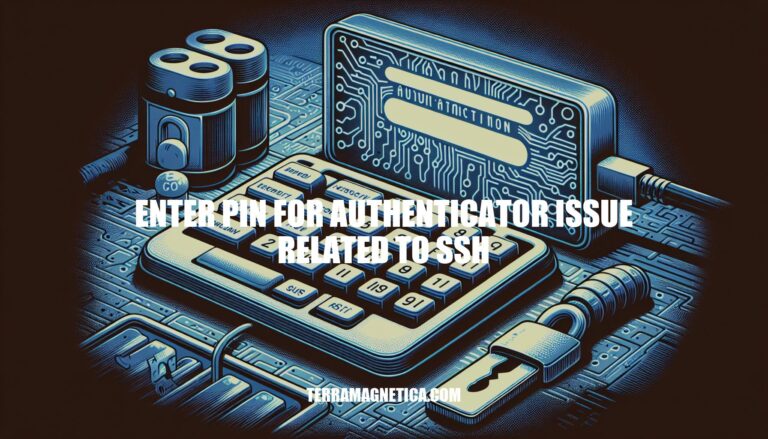


Have you ever encountered the frustrating ‘Enter PIN for authenticator’ issue while trying to add your SSH key to the ssh-agent? This problem can arise when using a command intended for Apple’s ssh-add, but your system is running a different implementation. The confusion surrounding this issue lies in the differences between Apple’s keychain-based authentication and non-Apple versions that use FIDO authenticators.
Let’s delve into how to navigate this authentication challenge effectively and ensure a seamless SSH key management experience.
When you encounter the “Enter PIN for authenticator” issue while trying to add your SSH key to the ssh-agent, it can be frustrating and confusing. The problem arises when you’re using a command that’s meant for Apple’s version of ssh-add, but your system is running a different implementation. This might happen if you’ve installed OpenSSH through Homebrew or another package manager.
The issue stems from the fact that Apple’s version of ssh-add stores passwords in the keychain, so you don’t need to type them every time. In contrast, non-Apple versions of ssh-add use FIDO authenticators, which require a PIN for authentication. When you use the `-K` option with ssh-add, it loads resident keys from a FIDO authenticator, which is why you’re being prompted for a PIN.
To resolve this issue, try using the correct command. If you’re running a non-Apple version of ssh-add, you should use the `-k` option (with a lowercase `k`) instead of the `-K` option. This will allow you to enter your passphrase, rather than a PIN.
It’s also important to note that if you’re using macOS Monterey or later, the `-K` and `-A` flags are deprecated in favor of the `–apple-use-keychain` and `–apple-load-keychain` flags, respectively.
By understanding the difference between Apple’s version of ssh-add and non-Apple versions, you can avoid this issue altogether. Remember to use the correct options and commands when working with SSH keys, and you’ll be well on your way to resolving any authentication issues that may arise.
By gaining a deeper understanding of the ‘Enter PIN for authenticator’ issue related to SSH keys, you are better equipped to troubleshoot and resolve similar authentication challenges efficiently. Remember that the choice of commands and options plays a crucial role in ensuring the smooth functioning of your SSH key management process. Whether utilizing Apple’s ssh-add or non-Apple versions, using the correct commands and flags is key to avoiding unnecessary PIN prompts.
Keep this knowledge in mind as you navigate SSH key authentication intricacies, and you’ll be well-prepared to handle any hurdles that may come your way. Stay informed, stay proactive, and streamline your SSH key management practices with confidence.